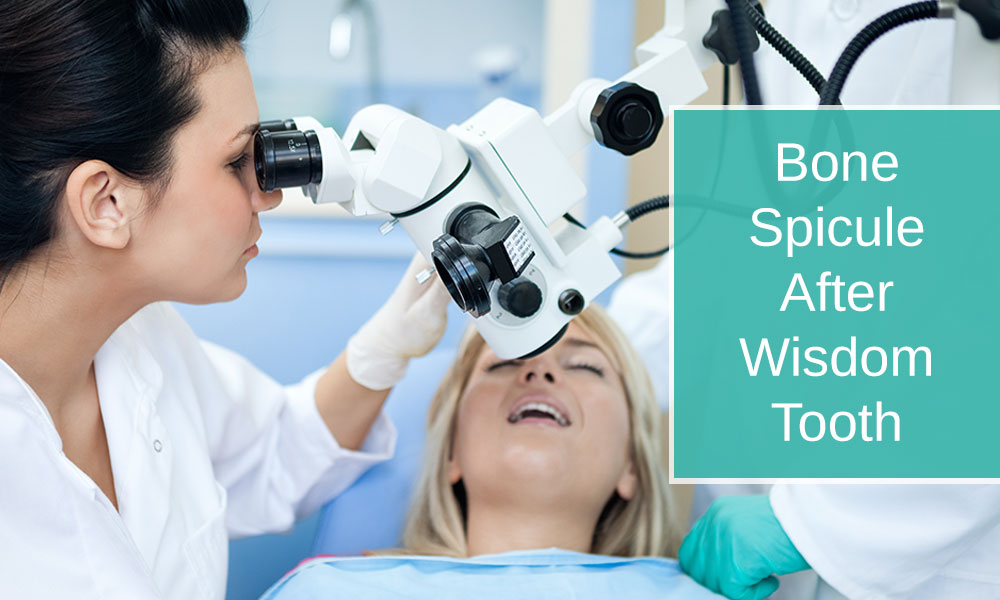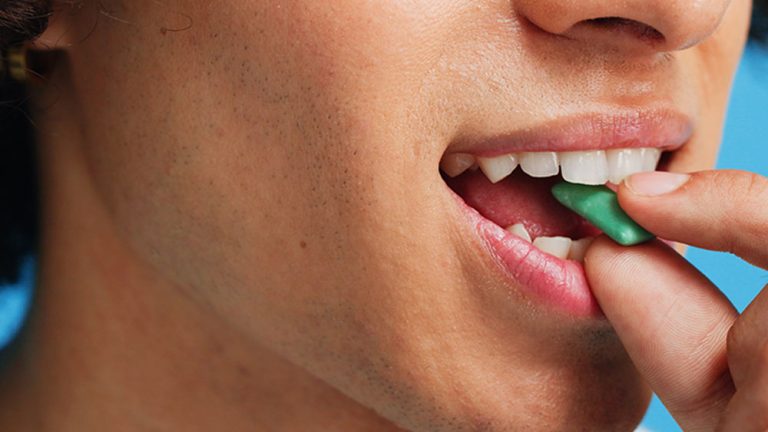
Bone Spicule After Wisdom Tooth Extraction
Undergoing a wisdom tooth extraction is a common dental procedure, often considered a rite of passage in late adolescence or early adulthood. While many focus on the immediate concerns of surgery and recovery, few anticipate a less discussed, albeit crucial, aspect of post-extraction – the potential development of bone spicule (spur).
In this comprehensive guide, we delve into the somewhat perplexing phenomenon of bone spurs that can occur following wisdom tooth removal. We aim to demystify this condition, shedding light on its causes, symptoms, and the various treatment options available. Our goal is to equip you with in-depth knowledge, ensuring that if you or someone you know encounters this complication, you’re well-prepared to handle it effectively.
A Closer Look at the Procedure and Its Necessity
Wisdom tooth extraction, a procedure to remove one or more wisdom teeth — the four permanent adult teeth located at the back corners of your mouth on the top and bottom — is a common dental surgery. Typically, these teeth emerge in your late teens or early twenties. Often, they are extracted because they don’t have room to grow properly and can cause problems such as:
- Impaction: Wisdom teeth may not emerge from your gums correctly, becoming trapped or impacted, leading to pain and infection.
- Misalignment: They can push against other teeth, causing misalignment of your dental arch.
- Cavities and Gum Disease: Partially emerged wisdom teeth can be hard to see and clean, making them more susceptible to tooth decay and gum disease.
The Extraction Process
- Pre-Surgery Evaluation: A dentist or oral surgeon evaluates the position of the wisdom teeth and plans the procedure.
- Anesthesia: Depending on the complexity, local, sedation, or general anesthesia is administered.
- The Procedure: The surgeon makes an incision in the gum, removes bone blocking access to the tooth root, divides the tooth into sections if necessary, and removes the tooth.
- Post-Surgery Recovery: Immediate post-operative recovery typically involves resting, managing pain, and adhering to a soft food diet. Complete healing usually occurs within a few weeks.
Despite being a routine procedure, like any surgery, wisdom tooth extraction carries the risk of complications, one of which is the development of bone spurs.
What is a Dental Bone Spicule?
Understanding this Post-Extraction Phenomenon
A bone spicule, in the context of dental surgery, is a small, bony growth that forms in the jawbone following an extraction. These spicules, also known as bone fragments or osseous spurs, are not uncommon after the removal of wisdom teeth. They occur when small pieces of bone are left behind during the extraction process or when the bone surrounding the removed tooth begins to heal and remodel.
The Formation of Bone Spurs
- Surgical Remnants: Sometimes, tiny bone fragments may not be completely removed during extraction.
- Natural Bone Growth: The jawbone may produce new bone as part of the healing process, which can sometimes form a spur.
It’s important to distinguish bone spurs from other post-extraction complications such as dry socket or infection. While a dry socket involves the premature loss of a blood clot in the extraction site leading to exposed bone, and an infection is characterized by swelling, pus, and pain, a bone spur is typically less painful and is felt as a hard, sharp fragment in the gum.
Recognizing the Signs and Knowing When to Seek Help
After a wisdom tooth extraction, it’s crucial to monitor the healing process for any unusual symptoms. Identifying a bone spur involves being aware of certain signs and knowing what to feel for in the extraction area.
Symptoms of a Bone Spur
- Feeling a Hard, Sharp Fragment: You might feel a small, hard piece in the gum where your tooth was extracted. It can feel sharp or jagged.
- Discomfort or Pain: While not always painful, a bone spur can cause discomfort, especially when chewing or brushing.
- Swelling or Inflammation: Some swelling is normal after an extraction, but persistent or increasing swelling could indicate a bone spur.
- Visible Bone Fragment: In some cases, the bone spur may protrude through the gum and become visible.
Self-Identification and Seeking Dental Advice
- Self-Examination: Gently probe the area with a clean finger to feel for any hard, sharp points.
- Consult Your Dentist: If you suspect a bone spur, it’s important to consult your dentist. They can confirm its presence and advise on the next steps.
Remember, not every discomfort post-extraction indicates a bone spur, but it’s always better to be cautious and seek professional advice.
Treatment Options for Bone Spurs
Navigating Through Relief and Recovery
If you’ve identified a bone spur following a wisdom tooth extraction, there are several treatment options available. The course of action largely depends on the size of the spur and the level of discomfort it causes.
- Professional Dental Treatments
- Manual Removal: Small, accessible bone spurs can often be removed quickly and painlessly by a dentist.
- Further Surgery: In rare cases, if the bone spur is large or deeply embedded, a minor surgical procedure might be required.
- Home Care and Management
- Saltwater Rinses: Gently rinsing your mouth with warm salt water can help soothe the area and keep it clean.
- Pain Management: Over-the-counter pain relievers can help manage discomfort.
- Soft Foods: Eating soft foods can prevent irritation of the area.
- Healing Time
- Typically, bone spurs resolve within a few weeks, but this can vary depending on the individual case.
Preventive Measures Post-Procedure While it’s not always possible to prevent bone spurs from forming, following your dentist’s post-operative care instructions can minimize the risk and promote healthy healing.
Preventing Bone Spurs After Extraction
Proactive Steps for a Smoother Recovery
While bone spurs are a natural part of the healing process and not always preventable, there are measures you can take to reduce the likelihood of their occurrence and ensure a smoother recovery after a wisdom tooth extraction.
- Pre-Surgery Precautions
- Discuss Risks with Your Dentist: Understanding the risks associated with your specific case can help in taking appropriate precautions.
- Choose an Experienced Oral Surgeon: An experienced surgeon is less likely to leave bone fragments during the procedure.
- Post-Surgery Care
- Follow All Aftercare Instructions: Adhering strictly to your dentist’s post-operative instructions is crucial.
- Regular Check-ups: Attend follow-up appointments to ensure proper healing and early detection of any complications.
- Lifestyle Adjustments
- Diet: Stick to soft foods immediately after the surgery to avoid irritating the extraction site.
- Oral Hygiene: Maintain gentle yet thorough oral hygiene to prevent infection and promote healing.
By taking these steps, you can help minimize the risk of developing bone spurs and other complications following your wisdom tooth extraction.
Case Study: Real-Life Experience with Bone Spurs
A Patient’s Journey Through Diagnosis and Treatment
To illustrate the experience of dealing with bone spurs after wisdom tooth extraction, let’s examine a brief case study.
Background
- Patient Profile: Emily, a 24-year-old woman, underwent a routine wisdom tooth extraction.
- Post-Extraction Course: Initially, her recovery was uneventful, but after a week, she began to feel a sharp pain in the extraction site.
Identifying the Issue
- Emily noticed a small, hard point in her gum. Concerned, she revisited her dentist.
- The dentist confirmed the presence of a small bone spur.
Treatment and Recovery
- Procedure: The dentist was able to remove the bone spur in a quick, in-office procedure.
- Follow-up Care: Emily was advised to continue with saltwater rinses and to eat soft foods for a few days.
- Outcome: She experienced immediate relief post-removal, and her recovery proceeded without further issues.
Patient Reflection
- Quote: “I was worried when I first felt that sharp pain, but understanding what it was and getting it treated quickly made a huge difference,” shared Emily.
This case study highlights the importance of monitoring your recovery and seeking prompt dental advice if you suspect something amiss.
Expert Insights from A Dentist
Professional Advice on Managing Bone Spurs Post-Extraction
Gaining insights from dental professionals can provide valuable guidance on managing and treating bone spurs after wisdom tooth extraction. Here are some expert opinions and advice in this area:
- Understanding the Condition
- Expert Quote: “Bone spurs are a natural response of the body as it heals and remodels bone tissue post-extraction. While they can be uncomfortable, they’re typically not a cause for serious concern,” explains Dr. Yaghmai, DDS.
- Importance of Post-Operative Care
- Advice: Experts stress the importance of following all aftercare instructions given by your dentist or oral surgeon. This includes dietary restrictions, oral hygiene practices, and attending follow-up appointments.
- When to Seek Help
- Guidance: “If you feel something sharp or experience significant discomfort weeks after your extraction, it’s important to get it checked. Early intervention can prevent further complications,” advises Dr. Yaghmai, DDS.
- Latest Research and Findings
- Update: Ongoing research in dental surgery and recovery continues to improve our understanding of post-extraction complications like bone spurs, leading to more effective prevention and treatment strategies.
- Holes in Teeth not caused by a Cavity
- Teeth holes not caused by cavities can be a result of many varying potential factors, including pits and fissures.
These insights emphasize the importance of being informed and proactive in your dental health care, especially when it comes to potential complications like bone spurs.
Navigating the Path to Recovery: Key Takeaways on Bone Spurs Post-Extraction
As we conclude our comprehensive exploration of bone spurs following wisdom tooth extraction, it’s essential to revisit the key points that can guide you through understanding, identifying, and managing this post-surgical complication.
- Awareness is Important: Being informed about the possibility of bone spurs can help you stay vigilant during the recovery process.
- Prompt Identification and Treatment: Recognizing the symptoms early and consulting with your dentist can lead to quick resolution and prevent further discomfort.
- Adherence to Aftercare Instructions: Following your dentist’s post-operative care instructions is paramount in preventing complications like bone spurs.
- Seek Professional Advice: Never hesitate to contact your dental professional if you have concerns during your recovery period.
Remember, while bone spurs can be an unexpected setback in your recovery journey, they are typically manageable with the right care and attention. Stay informed, follow your dentist’s guidance, and prioritize your oral health to ensure a smooth and speedy recovery.
X. Additional Resources
For further information on wisdom tooth extraction and recovery, you may find these resources helpful:
- American Dental Association (ADA): Provides extensive information on dental procedures and aftercare.
- Oral Health Foundation: Offers advice and support on various dental health issues, including post-surgical care.
- Your Local Dental Clinic: Don’t forget that your dentist is a valuable resource for personalized advice and treatment options.



